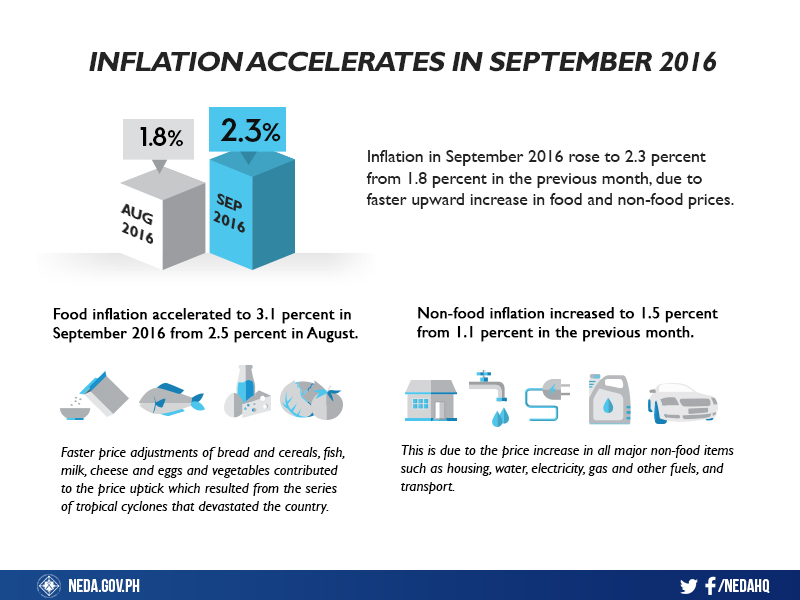05 October 2016
MANILA – Inflation in September 2016 rose to 2.3 percent from 1.8 percent in the previous month, due to faster upward increase in food and non-food prices, according to the National Economic and Development Authority (NEDA).
“The increase in inflation can be attributed to the decline in production since August and the low base effect for non-food items,” said NEDA Officer-in-Charge Rosemarie G. Edillon.
But the September 2016 inflation is within the forecast of the Bangko Sentral ng Philippines (BSP) of 1.6-2.4 percent.
Food inflation accelerated to 3.1 percent in September 2016 from 2.5 percent in the previous month. This is due to the adverse effects brought about by the series of tropical cyclones that devastated the country.
“Rice prices will remain stable since the 250,000 MT of rice imported from Thailand and Vietnam is expected to arrive by the end of October,” the NEDA official said.
However, the risk of La Niña developing during the fourth quarter of 2016 is still looming over the country at 41 percent in September to November and 40 percent in October to December, according to the Philippine Atmospheric, Geophysical and Astronomical Services Administration (PAGASA).
“We must keep on strengthening the agricultural sector through a comprehensive agricultural development program that aims to increase the resiliency of the sector and create a balance in agricultural policy,” said Edillon, who is also NEDA Deputy Director-General.
“This is a major component of the proposed Philippine Development Plan 2017-2022,” she added.
Also, non-food inflation increased to 1.5 percent from 1.1 percent in the previous month. This is due to the price increase in all major non-food items such as housing, water, electricity, gas and other fuels, and transport.
“However, inflation will remain low and stable for the rest of the year with the continuous expansion of the domestic economy, solid private household consumption and investment, buoyant business and consumer sentiment, and adequate credit and domestic liquidity,” said Edillon.
Full-year inflation for 2016 is expected to be slightly lower than the government’s inflation target of 2 to 4 percent. But international and domestic risks however, are tilted to the upside from a possible rally in oil prices, depreciation of the peso against the US dollar, and pending petitions for electricity rate increases.
–END–




